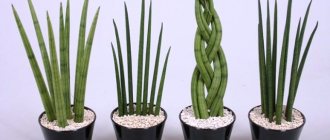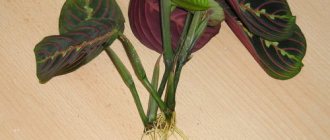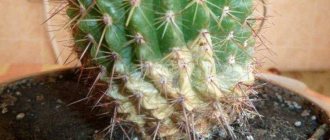What is cupressus
An evergreen plant belonging to the cypress family is called cupressus, cypress or cypress. O This is a tree with wrinkled bark, the shade of which varies from dark gray to brown. The branches on a very slender trunk are located in the same plane; adult plants have scaly needles, while young plants have very soft, small needles. Cypress can grow up to several meters in height.
Most often, cupressus is used as a landscape decoration in a country house or garden plot - the tree fits perfectly into the composition of alpine hills and flower beds. It can simply decorate the entrance or replace the New Year tree. Cypress can be planted in open ground and decorative pots.
General information about the plant
North America, or more precisely California, is considered to be the birthplace of cypress. There are now 14 species of cypress, which primarily grow in the Northern Hemisphere in warm temperate climates. Now some types of cypress can be found on the Crimean Peninsula, Crete, Asia Minor, southern Russia and other territories.
This evergreen shrub or tree has round cones that ripen only in the second year. The branches of the plant are covered with scale-like needles and branch in one or more planes. Cypress propagates by grafting, cuttings and seeds.
If you are planning to grow cypress at home, then consider the fact that it has a positive effect on the nervous and respiratory systems due to its pine aroma. In addition, this plant intensively produces oxygen necessary for the human body.
Kinds
There are several known plant species and many forms and varieties, some of which are grown at home.
The most popular types are:
- Hybrid of Cupressus "Goldcrest". It is resistant to lack of moisture in the soil (drought-resistant), not very picky about the soil in which it grows, and shade-tolerant. It is characterized by increased vitality and grows slowly. Can be cultivated in open ground and apartment conditions.
- Wilma. This is the most popular variety, but at the same time the plant is very sensitive to care. It grows excellently in an apartment if it has a constant microclimate and almost no drafts.
- Macrocarpa belongs to the species Goldcrest Wilma (cypress). A characteristic feature that distinguishes it from other species is the lemon-yellow tint of the needles. The branches are placed on the trunk at an oblique angle, the plant has the shape of a cone and is very beautiful. It grows up to one and a half to two meters in height, secretes an essential oil with an aroma reminiscent of lemon. There are several varieties of Macrocarp, some of which are grown indoors, others in open ground. The root system is located close to the surface.
- Gold. It got its name due to the unusual shade of the crown - it is golden. The plant is very beautiful and at the same time useful: the essential oils it produces have a beneficial effect on the respiratory system. Unique tinctures can be made from Cupressus Gold cones. However, as Miss Clean magazine found out, such a flower should not be placed in a room where a person suffering from high blood pressure or epilepsy lives.
We recommend: Strawberry blossoms - 5 important things for a good harvest
Advice Every year in the spring, in April or May, replant Macrocarpa cupressus into new soil using the usual method of transshipment. This will allow the plant to develop perfectly and maintain an aesthetic appearance.
Cupressus lemon. Indoor cypress: types and varieties, how to care for it?
Cypress is a plant that reminds of summer, sea, relaxation, and fresh air. But this smell of freedom and good mood can be easily extended if you buy indoor cypress for your home. But what type and variety should you choose and how to care for it? Let's try to figure it out.
Peculiarities
The biological family Cypressaceae includes more than 30 genera and more than 166 species. The most famous representatives of evergreen genera: juniper, thuja, thuja, cypress, cypress. Cypress (Cupréssus) and cypress (Chamaecýparis). These plants are very similar, hence the confusion among home gardeners about the names of their species and varieties.
Cypress trees are inhabitants of the tropics and subtropics. They appeared in the Cenozoic era, so to say that their homeland is the Mediterranean or North America would be unfair: these territories did not yet exist on the planet. But the plant feels comfortable there, as well as on the Black Sea coast, the Far East, the temperate zone of Asia, and Australia.
Cypress has both male and female cones growing under the same crown (a monoecious plant). In the second year, the cones ripen: the seeds, which are hidden under the scales, cause the capsule to open during its own growth. Inside each of several seeds is an embryo from which a young plant with small, light green, soft, needle-shaped leaves can be grown. Over time, they will press against the branches, darken and resemble scales.
Diseases and pests
More often than others, spider mites, false scale insects, and scale insects attack cupruscus. For prevention, spray or bathe the plant in the Actelika solution (1-2 ml per 1 liter of water), repeat the treatment after 7 days. You can spray with Karbofos or Aktara in accordance with the instructions for use.
When scale insects or false scale insects appear, brown plaques form on the stems and leaves. The leaves begin to dry out and fall off due to insects sucking out cell sap.
Improper watering often leads to root rot. To save the plant from disease, treat the root system with an antiseptic and transplant the cypress into new, disinfected soil.
First steps after purchase
Cupressus is transshipped immediately after acquisition. By the time the plant appears in the house, it is advisable to prepare a suitable container and substrate.
Cypress is harmed by sudden changes in temperature, lighting level and air humidity. If you plan to place the purchased plant in conditions different from previous ones, you need to accustom it to the new regime gradually.
IN THE PHOTO: To get 100% healthy plants, you should order young Cypress trees from nurseries, botanical gardens or trusted specialized stores.
To improve the health of Kupressus, it is treated with the fungicide Fitosporin-M. Preventive treatment with Fitoverm will protect against sudden pest damage.
Home care
The Cupressus plant must be carefully cared for at home. Care must take into account the following factors.
- Lighting. Provide diffused but bright light, as direct sunlight has a detrimental effect on the cupressus - the leaves will turn yellow and fall off. The plant is very light-loving, but can also grow well in partial shade. During the warm months of the year, it is better to keep cypress in the shade. However, when there is insufficient lighting, the cupressus stretches out, its shape deteriorates and becomes ugly.
- Watering. The plant should be watered abundantly in spring, summer and early autumn. In the winter months, reduce the amount of watering to avoid waterlogging and root rot. Cypress does not tolerate dry soil and excess water equally well. Severe drying of the soil can lead to the death of the conifer. How often you need to water the plant directly depends on the temperature in the room where it is located. For example, if the room is +8°C, watering once every 8 days would be appropriate, if from +12 to +14°C - once every 5-7 days.
- Air humidity. High humidity will be optimal. If the air is too dry, the cupressus will simply stop growing. In summer, be sure to spray the flower, this will ensure increased humidity and the best growing conditions.
- Temperature. The most suitable temperature for cupressus is +11° C. In summer, the optimal temperature will be from +18 to +25° C, in winter - from +5° to +10° C. In the cold season, it is better to place the plant in a cool place, but the ambient temperature air should not fall below +5° C.
- Fertilizers. From May to August, feed cypress with liquid mineral formulations intended for indoor flowers, and you need to take half the dose recommended on the package. Fertilizers are applied to previously loosened soil.
We recommend: Cactus - a talisman or an energy vampire? Why can't you keep cacti at home?
Advice If in winter it is not possible to move the flower to a cool place, simply spray it in the morning and evening with warm water.
Cypress does not tolerate root damage well, so perform a complete replanting with replacement of the soil ball only if absolutely necessary. It is better to reload and replace that part of the soil that is easily separated from the root system when trying to remove the plant from the pot.
The ideal soil for cupressus has the following composition:
- turf soil - 1 part;
- sheet - 2 parts;
- peat - 1 part;
- sand - 1 part.
Cypress loves loose soil, good drainage is a must. When replanting, do not bury the root collar into the ground under any circumstances - the flower may die.
Cypress from cuttings
- Find a twig of last year's growth on a cypress tree - a two-year-old shoot, still green, but already beginning to woody. Cut approximately 10-12 cm from the crown. Remove the needles from its lower part, leaving about 4 cm of smooth petiole.
- Prepare about a cup (125 g) of a mixture of peat soil and sand in equal parts (sand can be replaced with vermiculite). Disinfect it for 2 minutes in the microwave, cool and lightly moisten with boiled water.
- Pour the soil into a transparent zip bag (with a plastic zipper). Take a wide bag, and glue it at the bottom with tape from two corners so that you get a cone. Place the cutting in it, spray it with a spray bottle (boiled water only), and close tightly.
- Hang the bag in a very bright place that receives direct sun only in the morning or evening. Do not open the package, there is no need to ventilate or water - the humidity will remain at 95-97%. You should wait 2-3 months for roots. When they grow about 5-7 cm, you can plant the branch in a pot with a diameter of 8 cm.
Useful tips
The following recommendations will help ensure normal development and preserve the beauty and health of the flower at home.
- Yellowing of the cupressus indicates insufficient care, lack of nutrients, dry air, watering with very hard water (excess calcium forms in the soil). Increase plant feeding, watering and spraying.
- Exposure of the flower to direct sunlight will cause the leaves to yellow and fall off. It is necessary to move the plant to another place, more shaded and cooler.
- The tips of the leaves turn brown due to insufficient watering, dry or cold air.
- The twigs will begin to dry out if the cupressus is located near heating or heating devices. In this case, move the pot to another place and increase the number of sprays.
- Be sure to ensure that the flower does not freeze.
- In spring, prune dead branches. After pruning, lubricate the exposed bark with a special decoction.
Reproduction methods
Growing cypress from seeds
Nertera granadensis Home care Types of Nertera photo Reproduction and transplantation
It doesn’t matter whether you bought cypress seeds in a store or collected them yourself, before you start sowing, you need to stratify them. To do this, they are placed on the refrigerator shelf for 3–4 months.
Immediately before sowing, the seed material is immersed in water for 12 hours, which must be warm, and it is better to use Epin or Kornevin solution for this.
Take a seedling box and at its bottom make a drainage layer of crushed tree bark, which is covered with soil mixture for coniferous crops. Next, the seeds are sown according to a 4x4 centimeter pattern. You can replace the special soil mixture with sawdust or sand, but slightly grown seedlings will still have to be transplanted into a suitable soil mixture. The crops are placed in a warm place and care is taken to keep the substrate moist at all times, but it will be good if at least ½ of the seeds germinate.
After the seedlings have a height of about 50–60 mm, the bushes are transplanted into separate pots, but the root collar of the plants cannot be buried. Then move them to a well-lit place and provide them with timely watering, fertilizing and moistening from a spray bottle. After just 12 months, the bushes will have a height of about 20–25 centimeters.
Cuttings
Cypress can also be propagated by semi-lignified or apical cuttings, of which sufficient quantities remain after pruning the tree. You will only need those pieces that have a heel. All the lower leaf plates are torn off from them, and then they are placed in a jar filled with Kornevin’s solution. Remove the cuttings from the solution after about 24 hours, wash them under running water and sprinkle the cut areas with charcoal powder. For rooting, the cuttings are planted in a soil mixture for coniferous crops, deepening them by a third. Then the planted cuttings are watered so that the soil mixture is very well saturated with moisture, and then each cutting is covered on top with a transparent cap (a 3-liter glass jar). Do not forget to clean the shelter for 1-2 hours twice or thrice a week for ventilation. The cuttings should take root after 2 months.











